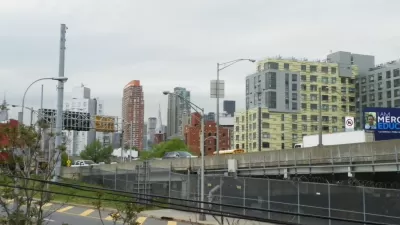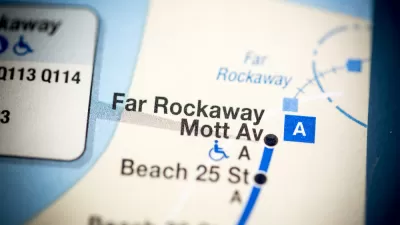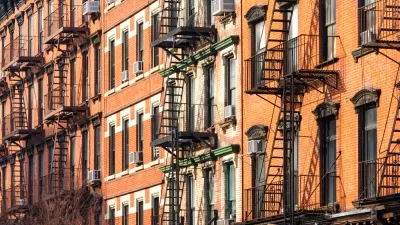In his State of the City Address on Feb. 3, the New York City mayor made it clear that his overriding priority is affordable housing. He targeted six neighborhoods in all five boroughs where development will be required to include affordable housing.
"Mayor Bill de Blasio unveiled a number of policies in his State of the City today—but argued that none of them would be possible unless the city tackled his top priority: affordable housing," writes
Mr. de Blasio has called for the construction of 160,000 market rate units as well.
The big change that de Blasio is calling for to make the affordable housing materialize is to replace the current voluntary inclusionary zoning code with a mandatory one. "Developers who want a property rezoned would have to commit to building permanently affordable housing," writes Jorgensen.
According to The Real Deal, the six new neighborhoods where developers will be required to build affordable units" are:
- East New York, Brooklyn
- Long Island City: Amtrak's Sunnyside Yards— 200 acres of rail yards in Queens.
- the Jerome Avenue Corridor in the Bronx,
- Flushing West, Queens
- Staten Island’s Bay Street Corridor
- East Harlem, Manhattan
The market rate housing has some neighborhood activists worried that would mean taller building and gentrification, particularly for one of the targeted neighborhoods, East New York in Brooklyn, described by New York Times writers
.
"But, much like his roll-out of the affordable housing plan, today’s speech contained no information on the percentage of units he’d require a developer to keep affordable," writes Jorgensen.
(Voluntary programs that gave tax breaks to developers called for making 20 percent of units affordable.) And some experts doubt that mandatory inclusionary zoning is a cure-all for unaffordable housing.
"The mayor singled out Sunnyside Yards — 200 acres of underdeveloped land in Queens — as prime for redevelopment," according to The Real Deal. "He proposed moving the rail yard underground in order to create 11,250 affordable units." However, Gov. Andrew Cuomo was quick to take that one off the list, reports The New York Post.
“The [Metropolitan Transportation Authority] uses Sunnyside Yards as an important facility for our transportation system, and it is not available for any other use in the near term,” Cuomo’s spokeswoman, Melissa DeRosa, said in a statement.
The mayor's plan needs the approval of the City Council.
FULL STORY: Observer: Bill de Blasio Pitches His Affordable Housing Plan in State of the City Address

Planetizen Federal Action Tracker
A weekly monitor of how Trump’s orders and actions are impacting planners and planning in America.

Restaurant Patios Were a Pandemic Win — Why Were They so Hard to Keep?
Social distancing requirements and changes in travel patterns prompted cities to pilot new uses for street and sidewalk space. Then it got complicated.

Maui's Vacation Rental Debate Turns Ugly
Verbal attacks, misinformation campaigns and fistfights plague a high-stakes debate to convert thousands of vacation rentals into long-term housing.

In California Battle of Housing vs. Environment, Housing Just Won
A new state law significantly limits the power of CEQA, an environmental review law that served as a powerful tool for blocking new development.

Boulder Eliminates Parking Minimums Citywide
Officials estimate the cost of building a single underground parking space at up to $100,000.

Orange County, Florida Adopts Largest US “Sprawl Repair” Code
The ‘Orange Code’ seeks to rectify decades of sprawl-inducing, car-oriented development.
Urban Design for Planners 1: Software Tools
This six-course series explores essential urban design concepts using open source software and equips planners with the tools they need to participate fully in the urban design process.
Planning for Universal Design
Learn the tools for implementing Universal Design in planning regulations.
Heyer Gruel & Associates PA
JM Goldson LLC
Custer County Colorado
City of Camden Redevelopment Agency
City of Astoria
Transportation Research & Education Center (TREC) at Portland State University
Camden Redevelopment Agency
City of Claremont
Municipality of Princeton (NJ)





























